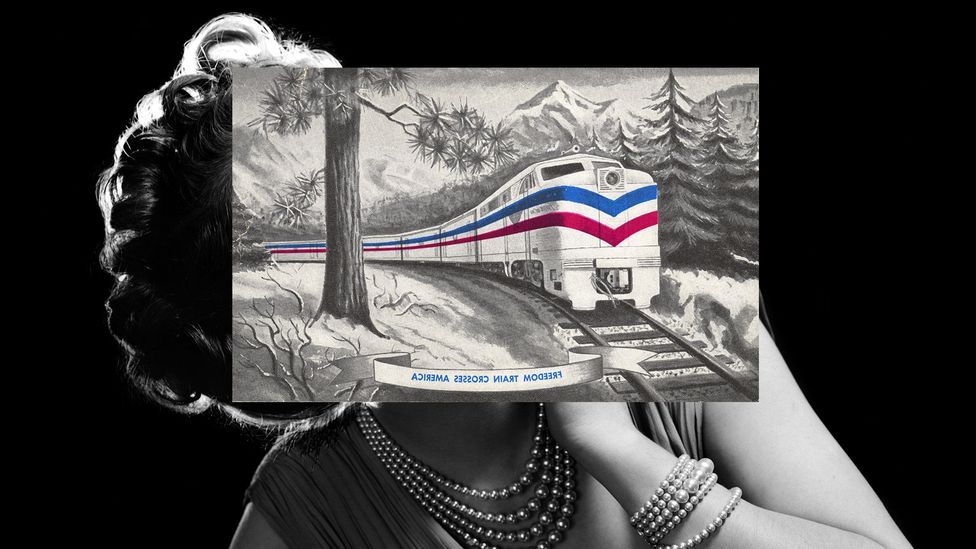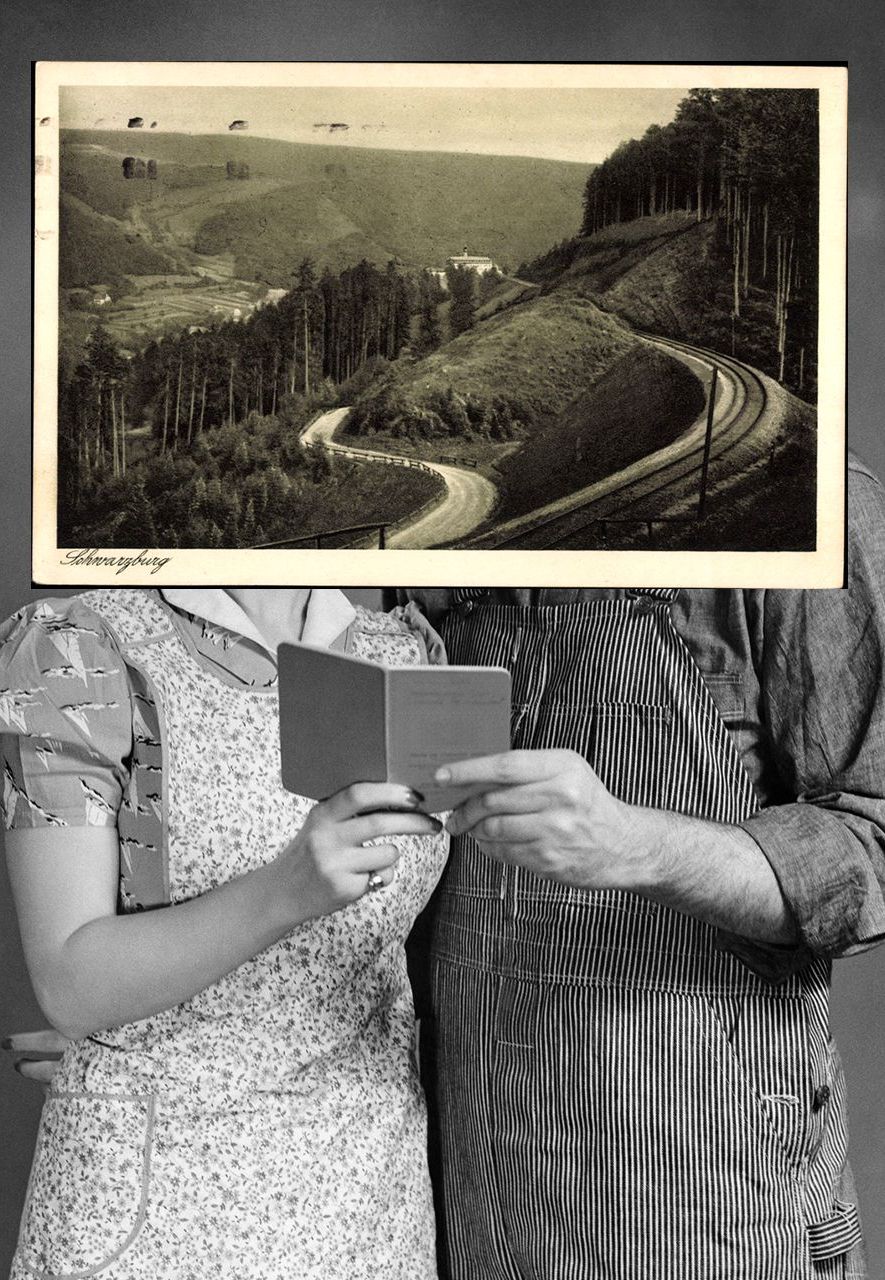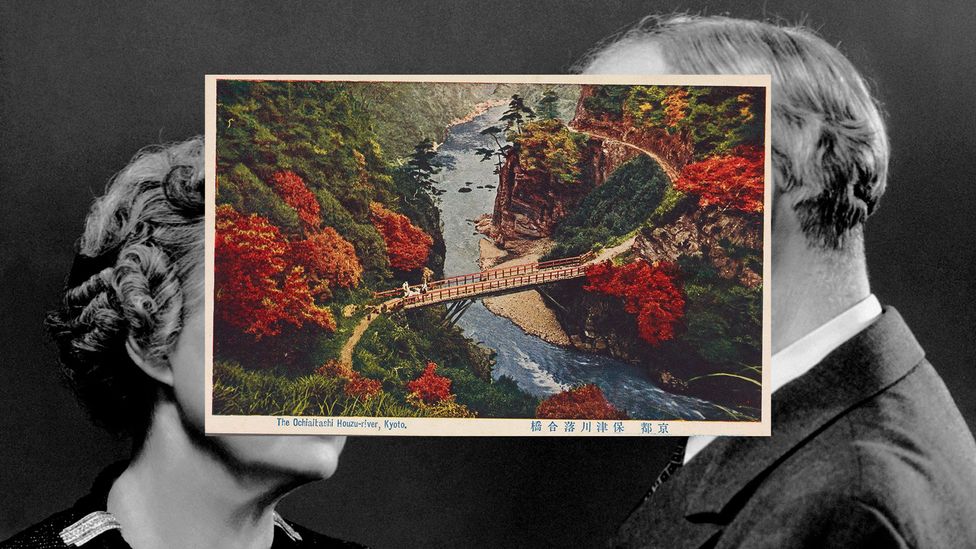We use them so much in everyday language that we often don’t even notice them, but metaphors and similes help us think more deeply – and make sense of the world around us, writes Helene Schumacher.
M
Metaphors are woven intricately into the tapestry of language (to use, well, a metaphor), and without them, it would be a dull, threadbare piece of cloth. But aside from injecting colour and imagery into language, metaphors serve a functional purpose; they can explain complex concepts we may not be familiar with, help us to connect with each other, and can even shape our thought processes. They help us better understand our world.
More like this:
– The surprising roots of everyday words
– The most powerful word in English
– The surprising history of the word ‘dude’
So, what exactly is a metaphor? We can probably all dust off a vague definition from school days past, along the lines of that in the Cambridge Dictionary: “an expression, often found in literature, that describes a person or object by referring to something that is considered to have similar characteristics to that person or object”. For Aristotle it was the process of giving something a name belonging to something else.

The French expression ‘I have a peach’, meaning ‘I’m excited’, is one of the country’s many gastronomic metaphors (Credit: Getty Images)
In fact, the word metaphor comes from Greek, and is itself a metaphor, meaning ‘to carry across or beyond’ (combining ‘meta’ (beyond) and ‘phero’ (to carry). Metaphors carry meaning across from one thing to another.
Metaphors transfer all kinds of connotations, associations and connections – more than exchanging words, they exchange concepts and ideas. Many scientists, including Albert Einstein, have used metaphor to explain theories. “The only way we have of learning something new is by comparing it to something we already know,” says author James Geary in the BBC Radio 4 programme Word of Mouth. But it’s not just “an unveiling of a resemblance”, or a revelation of something pre-existing, says Professor Stacy Pies from New York University; it’s also “an imaginative leap that stretches how we think” and enlarges our frame of reference.
We often rely on metaphor to talk about emotions or ideas, such as the archetypal metaphor, ‘my heart is broken’. Geary says that metaphors are found, like a fossil, in “any of the words we use to convey meaning, complexity and substance… either on the surface or if you dig into the etymology… we tend to think of metaphor as a way with words, but it’s actually a way of thought.” A metaphor is an invitation to understand something – and when that happens, there’s “a moment of intimacy between minds that’s really satisfying and pleasurable and meaningful”, says Pies.
The unusual but very fitting images used in Sylvia Plath’s poem Metaphors will, for example, chime with many mothers recalling the experience of being pregnant: “…An elephant, a ponderous house, / A melon strolling on two tendrils. / O red fruit, ivory, fine timbers! / This loaf’s big with its yeasty rising. / Money’s new-minted in this fat purse. / I’m a means, a stage, a cow in calf…”
“There is a two-way thing that has to happen – you’re reaching out, you’re holding your hand out to the person you’re talking to and saying ‘please understand me’,” says Pies. For the person who created the metaphor, when someone gets it, there is a sense of recognition, “a feeling of being understood, of having the invitation accepted, the hand grasped,” she says.
Pies compares metaphors to “3D chess”. You’re thinking three things at once: what it says, what it means and what it doesn’t mean. So what makes a good – or effective – metaphor? For Pies, it’s when the “zing” happens. Certainly it’s those that are vivid, striking and original. But it’s also about what the person making the metaphor is seeking to achieve in their audience. When they succeed in evoking their desired outcome, says Pies, there’s “a wonderful connection… like a spark”.
Hidden resemblance
“When you see something represented that you know in life, there’s a pleasure of recognition,” says Pies. Conversely, when you see something in art you don’t know in life, then it’s a way of experiencing that. “The act of imagination and feeling expands your emotional knowledge,” she explains.
The simile is the close relation of the metaphor, and shares many of its qualities. But unlike a metaphor, a simile uses the word ‘like’. So ‘life is like a box of chocolates’ is a simile. In his poem 90 North, Randall Jarrell paints a vivid picture with an unlikely simile: “like a bear to its floe, / I clambered to bed”. Both similes and metaphors often make the unfamiliar familiar, but when a surprising comparison makes you reconsider a familiar experience (such as going to bed being like a polar bear flopping on to an ice floe) it can be the opposite: making the familiar unfamiliar. “The poetry of metaphor is finding that connection, finding that hidden resemblance,” says Geary.

‘There is a two-way thing that has to happen’ in a successful metaphor (Credit: Getty Images)
Through defamiliarisation, metaphor helps stop us being desensitised to the everyday and awakens our senses. It makes us pay attention and reveals the uniqueness and wonder of the quotidian that we’ve become inured to. Take the analogy of a Cezanne painting of an apple. We look much more intensely at this than we would at a normal apple, but after studying the painting, we see an ordinary apple anew. Effective metaphor has the same eye-opening power.
But a successful metaphor also depends on what the person using it hopes to achieve. Dr Kathryn Allan from University College London explains that in political speeches, metaphors are chosen “purposefully and really consciously to try to make people perceive a situation in a certain kind of way”. For example, a war metaphor immediately presupposes a ‘good’ side and a ‘bad’ side. In a key speech about coronavirus in May 2020, UK Prime Minister Boris Johnson talked about “shining the light of science on this invisible killer”, and referred to “coming down the mountain” often being more dangerous. These metaphors were undoubtedly not accidental.
And what constitutes a bad metaphor or simile? One that’s dull or uninspiring, perhaps. We might say a cliche – like ‘two peas in a pod’ – is an unimaginative phrase. But it may just seem tired and unoriginal from overuse. “A cliche is really a brilliant metaphor that is a victim of its own success,” observes Geary. In Metaphors we Live by, George Lakoff and Mark Turner suggest our fundamental ways of talking about ourselves are metaphorical, even when we think we’re being literal. For example, we frequently refer to the past being behind us and the future in front of us. But parts of the world see the past as being in front, because it’s known. Does this influence what we consider possible or even affect our whole frame of thinking?
This type of metaphor – where time is a journey, for example ‘we’ll cross that bridge when we come to it’ – is also known as a ‘primal metaphor’ as it’s so integral to our language, our way of thinking and of viewing and experiencing the world. These are often imperceptible. “Ordinary language is littered with metaphors that we don’t recognise as metaphors,” says Geary. Many common idiomatic sayings are at their heart metaphors, for example ‘between a rock and a hard place’.

The word metaphor in Greek means ‘to carry across’ (Credit: Getty Images)
Some metaphors are termed ‘dead’ because we don’t even consider them metaphors – for example, the common usage of ‘seeing’ to mean understanding, as in ‘I see what you mean’. Allan says that as early as we have evidence, it seems the same verbs have been used to mean visually perceive and mentally perceive. But because we know a metaphor generally draws on the concrete to express the abstract, we assume it originated from the earlier meaning of physically seeing. Allan notes that recent research in cognitive semantics suggests these ‘dead’ metaphors are, in fact, perhaps the most ‘living’ types, because they are totally embedded in thought.
So-called ‘primary metaphors’ are metaphors that are entrenched in language because of the way we physically function. For example, using ‘up’ to convey positive associations and ‘down’ for negative connotations. These seem to exist because we aspire to an upright position, explains Allan. We almost don’t have any choice; we can’t help but think about things in those terms.
‘Near universals’
It would be hard to prove there are universal metaphors used in every language. But research has shown there are ‘near universals’ found across multiple languages, including those of different language families. The metaphor of vision to mean understanding is found in language families that are so different, it seems unlikely one has borrowed from another. There is also the metaphor for conveying intimacy in terms of warmth, for example, ‘a warm friendship’. Hugging or being physically close to people creates warmth; as a common human experience, you would expect to find it in lots of languages.
It’s very difficult to avoid metaphors – given we often use them unconsciously – but not everyone is a fan. There are ‘nuts and bolts’ people who seek a more direct, literal way of communicating or who are ‘deaf’ to metaphor. Pies says wryly, “they’re just not the people I want to be stuck on a desert island with”. She explains there is a school of thought that regards metaphor as “ornamentation of language, a sort of ‘dressing’… as if it’s possible to have a language that doesn’t have metaphor in it.”

‘A moment of intimacy between minds’ is how metaphors have been described (Credit: Getty Images)
The 17th-Century philosopher Thomas Hobbes, coming from the Puritan Protestant tradition, was against metaphors. Some perceived a conflict between reason and imagination (or what Hobbes would have called ‘fancy’). For him, metaphors were akin to lying and deceit, “wandering amongst numerous absurdities” as he put it, ironically using metaphor to denounce metaphor itself. Classical literature abounds with metaphor, for example Homer’s “wine-dark sea” used in the Iliad and the Odyssey, often to describe a rough, stormy ocean.
Many of today’s metaphors have historical origins, even if meaning has evolved over time. For example, ‘to take a parting shot’ originates from Parthian shot, a cunning military tactic employed by the Parthians. And the phrase ‘beyond the pale’ (‘pale’ comes from the Latin pales, meaning ‘stake’) marked the furthest extent of a settlement, and also has associations from Cromwell’s time in Ireland. These metaphors both once had a literal meaning, which over time became figurative.
And some metaphors are in a similar vein whatever the language. In Dutch, for example, you might refer to someone having the ‘skin of an elephant’, whereas in English we would say ‘a thick skin’. And the French equivalent to the English ‘when pigs might fly’ is ‘when hens will have teeth’.

A successful simile or metaphor is like a window into another person’s soul (Credit: Getty Images/ All montages by Javier Hirschfeld)
“Metaphors often spring from the experiences of daily life,” says Pies, and the culture of a country can inform its metaphors. For example, there are many food metaphors in French – everything from ‘telling salads’ (telling tall tales) to ‘I have the peach!’ (I’m excited). While of course we should be mindful of stereotyping, Allan says research has shown it’s highly likely speakers will draw on something culturally important.
Language without metaphor is impossible, according to Pies. “Language is through and through metaphorical,” she says. Without it, language would be dull, boring and flat: “We would just fall asleep!” It would also be “rather lonely, for the moment of understanding and of being understood that metaphor makes explicit, not in a literal way, but as a feeling, a moment of congruity, both imaginative and emotional, is the experience of being alive… It is an aperture into another soul, a window that a person opens and invites us to step through into a momentarily shared space… of understanding and beauty.” Metaphor, in other words, has the power to shape the way we see and experience the world.
If you would like to comment on this story or anything else you have seen on BBC Culture, head over to our Facebook page or message us on Twitter.
And if you liked this story, sign up for the weekly bbc.com features newsletter, called The Essential List. A handpicked selection of stories from BBC Future, Culture, Worklife and Travel, delivered to your inbox every Friday.


